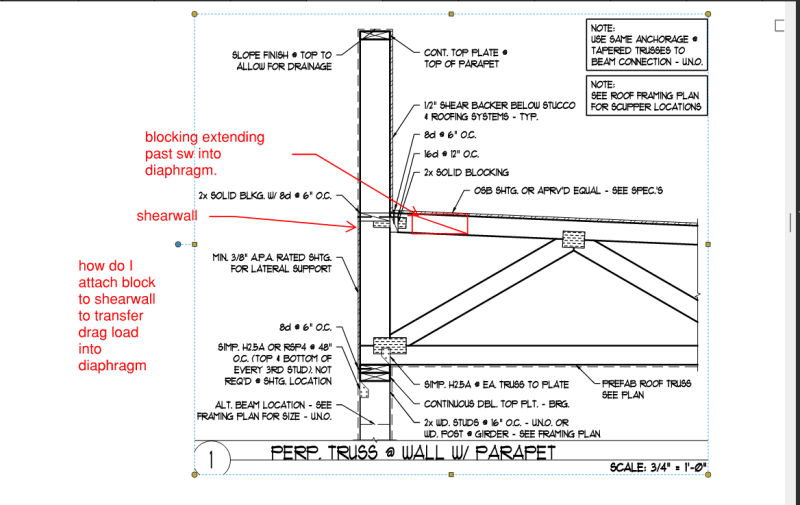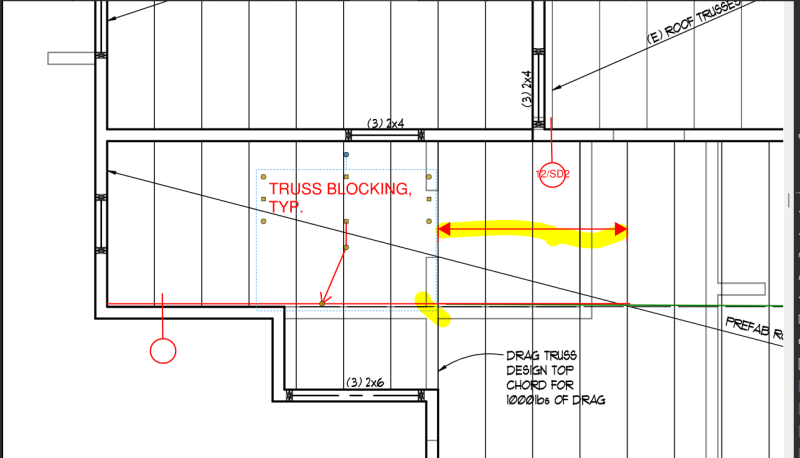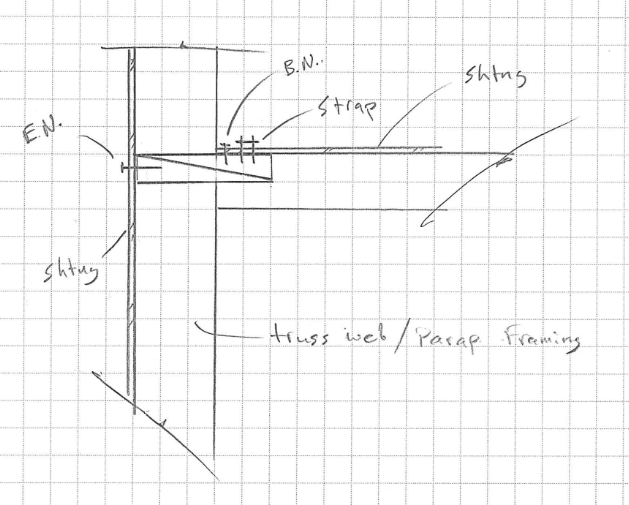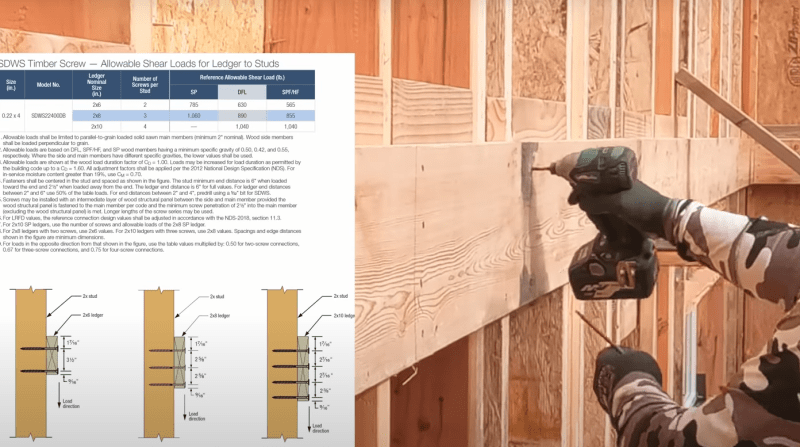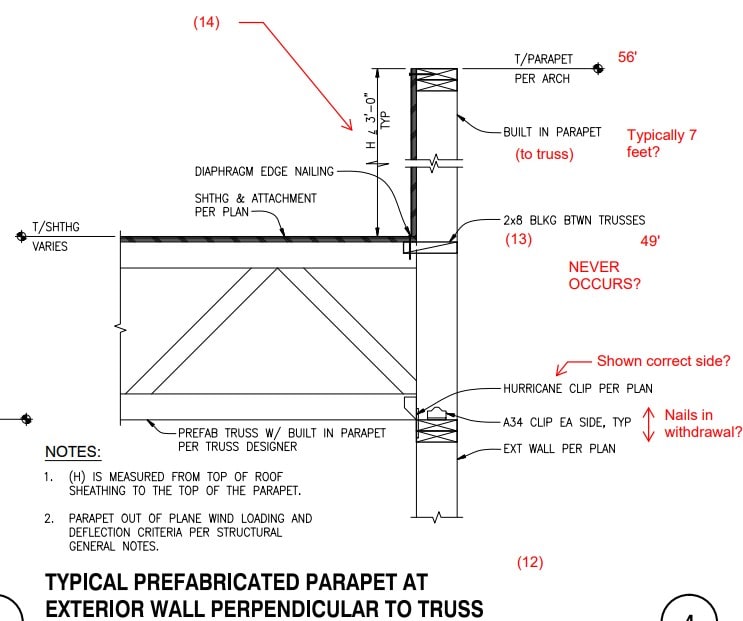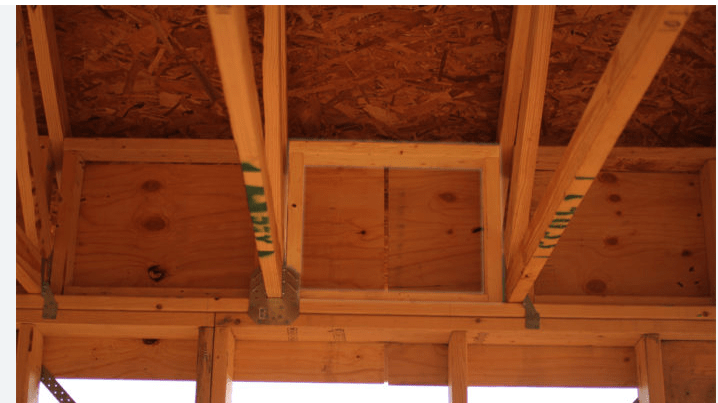reverbz
Structural
- Aug 20, 2024
- 82
Hey Guys, I have a couple of questions regarding drag in wood buildings(and in general).
1. When using blocking in the diaphragm for drag/development into the diaphragm, all of the blocks need to be connected with a strap right? Or can you just use the diaphragm nailing into them?
2. I have a perpendicular truss detail(see attached image)where the perpendicular truss is forming the parapet, and therefore, part of the shearwall. I'm trying to find a good drag connection here for the blocking to continue on in the diaphragm, could anyone point me in the right direction on this?
1. When using blocking in the diaphragm for drag/development into the diaphragm, all of the blocks need to be connected with a strap right? Or can you just use the diaphragm nailing into them?
2. I have a perpendicular truss detail(see attached image)where the perpendicular truss is forming the parapet, and therefore, part of the shearwall. I'm trying to find a good drag connection here for the blocking to continue on in the diaphragm, could anyone point me in the right direction on this?

